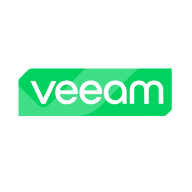

Elastic Observability and Veeam Data Platform are major players in the data management and application monitoring category. Elastic Observability holds the upper hand for larger organizations with its flexible data visualization and affordability, while Veeam Data Platform excels with robust backup and recovery capabilities, especially in VM environments.
Features: Elastic Observability provides a comprehensive platform with unlimited licenses based on Elasticsearch hosts, making it cost-effective. It supports Kibana integrations and offers flexible data visualization and machine learning capabilities. Veeam Data Platform is known for instant recovery, replication, and efficient backup management, providing reliable, user-friendly solutions integrated seamlessly with VM environments.
Room for Improvement: Elastic Observability users suggest enhancing visualization tools, metrics control, and scalability, alongside improving automation and adding more cloud-native features. Adjusting its licensing model for smaller organizations would be beneficial. For Veeam Data Platform, improvements include better physical backup capabilities, enhanced scalability, and a simpler licensing model. More automation in disaster recovery and reduced cloud integration complexity are desired.
Ease of Deployment and Customer Service: Elastic Observability is praised for its flexible deployment across on-premises and cloud environments, though users want improved documentation and support. Veeam Data Platform is celebrated for straightforward on-premises deployment and responsive customer support, highlighting ease of management.
Pricing and ROI: Elastic Observability is considered cost-effective with competitive pricing favoring larger organizations, thanks to efficient data handling and automation. Veeam Data Platform is regarded as affordable given its features, though relatively expensive for large VM environments, yet still delivers solid ROI with robust backup functionalities.
Elastic support really struggles in complex situations to resolve issues.
Most cases are handled perfectly.
I would rate their technical support a 10 out of 10.
The escalation from first, second to third tier is sometimes very long-lasting, but the resolve rate is quite high.
Elastic Observability seems to have a good scale-out capability.
Elastic Observability is easy in deployment in general for small scale, but when you deploy it at a really large scale, the complexity comes with the customizations.
What is not scalable for us is not on Elastic's side.
It involves acquiring additional licenses as needed.
In order to scale Veeam Data Platform, we have to pay a lot more money.
There are some bugs that come with each release, but they are keen always to build major versions and minor versions on time, including the CVE vulnerabilities to fix it.
It is very stable, and I would rate it ten out of ten based on my interaction with it.
Elastic Observability is really stable.
There are no issues with stability in Veeam Data Platform.
For instance, if you have many error logs and want to create a rule with a custom query, such as triggering an alert for five errors in the last hour, all you need to do is open the AI bot, type this question, and it generates an Elastic query for you to use in your alert rules.
It lacked some capabilities when handling on-prem devices, like network observability, package flow analysis, and device performance data on the infrastructure side.
Some areas such as AI Ops still require data scientists to understand machine learning and AI, and it doesn't have a quick win with no-brainer use cases.
The improvement we would like to see is the option to scale Veeam Data up in smaller sections rather than large sections, which requires paying much more.
Reducing it by 20% would make it more accessible to a broader range of customers.
OpenStack is something Veeam Data Platform doesn't support, and they haven't indicated that they will support it in the future.
The license is reasonably priced, however, the VMs where we host the solution are extremely expensive, making the overall cost in the public cloud high.
Elastic Observability is cost-efficient and provides all features in the enterprise license without asset-based licensing.
Observability is actually cheaper compared to logs because you're not indexing huge blobs of text and trying to parse those.
I don't consider the price expensive given its importance.
A reduction of 20% in the current cost would make the solution more attractive to clients.
Veeam Data Platform is more expensive than OpenStack because we pay for it in US dollars, while we pay for OpenStack in Egyptian pounds.
The most valuable feature is the integrated platform that allows customers to start from observability and expand into other areas like security, EDR solutions, etc.
the most valued feature of Elastic is its log analytics capabilities.
All the features that we use, such as monitoring, dashboarding, reporting, the possibility of alerting, and the way we index the data, are important.
The platform is user-friendly, comprehensive, and compatible with numerous market solutions, including virtualization and bare metal servers.
The most important aspect of this platform is data security with immutable data in the storage.
Veeam Data Platform is valuable for its stability and the ability to easily contact support for assistance.
| Product | Market Share (%) |
|---|---|
| Elastic Observability | 4.3% |
| Veeam Data Platform | 0.9% |
| Other | 94.8% |


| Company Size | Count |
|---|---|
| Small Business | 8 |
| Midsize Enterprise | 4 |
| Large Enterprise | 16 |
| Company Size | Count |
|---|---|
| Small Business | 216 |
| Midsize Enterprise | 99 |
| Large Enterprise | 138 |
Elastic Observability offers a comprehensive suite for log analytics, application performance monitoring, and machine learning. It integrates seamlessly with platforms like Teams and Slack, enhancing data visualization and scalability for real-time insights.
Elastic Observability is designed to support production environments with features like logging, data collection, and infrastructure tracking. Centralized logging and powerful search functionalities make incident response and performance tracking efficient. Elastic APM and Kibana facilitate detailed data visualization, promoting rapid troubleshooting and effective system performance analysis. Integrated services and extensive connectivity options enhance its role in business and technical decision-making by providing actionable data insights.
What are the most important features of Elastic Observability?Elastic Observability is employed across industries for critical operations, such as in finance for transaction monitoring, in healthcare for secure data management, and in technology for optimizing application performance. Its data-driven approach aids efficient event tracing, supporting diverse industry requirements.
Veeam Data Platform is designed for modern data management, providing secure backups, intelligent data insights, and resilience. It ensures data is protected, recoverable, and manageable across complex environments, supporting business continuity effectively.
Veeam Data Platform stands out with its robust capabilities in data protection, orchestrated recovery, and efficient management. It offers a simple interface while ensuring data security and availability, which is critical for businesses. The platform's compatibility with virtual machines, databases, and applications across VMware, Hyper-V, and cloud environments makes it a versatile choice for backup and disaster recovery strategies. Users gain confidence from its performance, from secure backups to facilitating effective infrastructure monitoring.
What are the key features of Veeam Data Platform?Veeam Data Platform is widely implemented by industries needing robust disaster recovery plans and data management solutions. It is particularly valuable in environments utilizing hybrid cloud solutions, protecting mission-critical workloads, and ensuring business continuity. Businesses leverage its capabilities to safeguard data integrity and facilitate long-term retention through efficient infrastructure management.
We monitor all Cloud Monitoring Software reviews to prevent fraudulent reviews and keep review quality high. We do not post reviews by company employees or direct competitors. We validate each review for authenticity via cross-reference with LinkedIn, and personal follow-up with the reviewer when necessary.